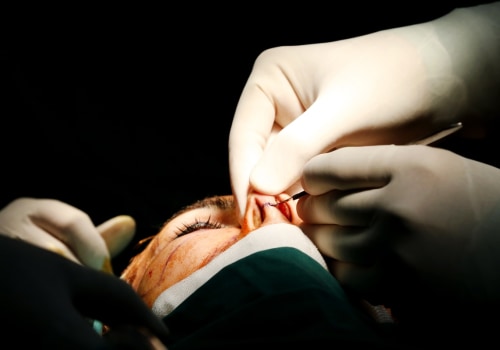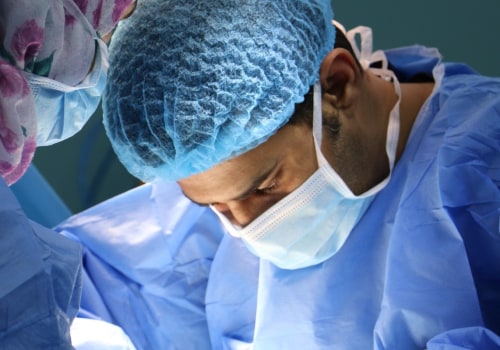Since the dawn of time, human beings have been actively involved in the search for self-improvement. Therefore, it should come as no surprise that plastic surgery is one of the oldest healing treatments in the world. Although the practice of reconstructive surgery continued throughout the Middle Ages, other significant advances were relatively stagnant thanks to the fall of Rome and the expansion of Christianity. However, some minor advances were made, including the development in the 10th century of a procedure to repair cleft lip.
In large part, science gave way to mysticism and religion. In fact, at one point during this period of time, Pope Innocent III declared that surgery in any form was expressly prohibited by Church law. For the most part, the search for scientific knowledge had been replaced by a focus on more personal and spiritual concerns. Sushruta is considered the father of plastic surgery.
He lived in India between 1000 and 800 BC, and is responsible for the advancement of medicine in ancient India. There is documentation of the use of surgical means to correct facial injuries dating back more than 4,000 years. Later, in European countries, advances in plastic surgery were slow to arrive. However, Eastern medicine shifted more easily to plastic surgery, and there are many recorded cases of skin grafts and reconstructive surgery throughout history in that part of the world. Overall progress in plastic surgery, like most medicine, was slow over the next several thousand years, as techniques used in India were introduced to the West and subsequently refined and adapted for new applications.
However, there were advances in medicine during the Greco-Roman period, and that progress was documented in ancient texts that spread over time throughout civilization. It was during this period that the Roman medical writer Aulus Cornelius Celsus wrote De Medicina, which presented surgical methods for reconstructing ears, lips and noses. This 70-volume work contained numerous passages devoted to reconstructive techniques for repairing facial defects. In addition, the safety of surgical patients was further compromised by the lack of hygiene and cleanliness standards. However, some minor advances were made, including the development in the 10th century of a procedure to repair cleft lip. During the 17th century, plastic surgery was again in decline, but by the end of the 18th century, the pendulum had swung in the other direction.
However, the next major breakthroughs in plastic surgery weren't going to be until the 20th century, when war victims made reconstructive plastic surgery a necessity for many soldiers. In fact, it was the First World War that took plastic surgery to a new level within the medical establishment. These serious injuries required bold new innovations in reconstructive surgical procedures. Some of Europe's most qualified surgeons dedicated their practices to restoring the integrity of their countries' soldiers during and after the war. In fact, it was around this time that surgeons began to fully realize the potential influence that personal appearance could exert on the degree of success experienced in their lives. Because of this understanding, cosmetic surgery began to take its place as a somewhat more respected aspect of plastic surgery. This progress also brought with it a greater understanding of anesthesia and infection prevention, allowing surgeons to perform a wider variety of increasingly complex procedures.
These procedures included the first recorded cases of surgery that was really only “cosmetic” in nature, such as the first rhinoplasty and breast augmentation procedures. While many of these medical advances originated in Europe, other surgical advances were made in the United States. John Peter Mettauer using surgical instruments of his own design. One institution that played a very important role in advancing and improving plastic surgery, and surgery in general, was Johns Hopkins. William Stewart Halsted created the first general surgery training program in the United States. It could finally claim a level of surgical sophistication on par with Europe.
It wasn't long before the United States began to surpass the rest of the world, especially when it came to specialization within the field of surgery. Johns Hopkins was also home to Dr. John Staige Davis who was considered by most to be America's first surgeon devoted solely to plastic surgery. In 1916 he contributed a landmark article to The Journal Of The American Medical Association which described plastic surgery's role within medicine emphasizing specialization within this field. In 1946 it was time for a scientific journal specifically aimed at plastic surgeons so The Journal Of Plastic And Reconstructive Surgery became reality. The modern history of plastic surgery really began taking shape during 60s & 70s with many important scientific breakthroughs such as silicone which was used initially for skin imperfections. Thomas Cronin created & introduced a new breast implant device made from silicone & over next decade or so silicone implants were developed for use on almost every conceivable part of face & body. Plastic surgeons were moving at forefront of medical establishment including Dr Jennings who was appointed General Surgeon 1969 & another who won Nobel Prize. In 1980s plastic surgeons & advocates went great lengths to broaden public awareness & improve public perception about plastic surgery. This increase both quantity & quality information available consumers along with economic boom 80s began making plastic surgery more accessible mainstream. Growth continued through 90s despite problems caused by healthcare reform which led sharp declines insurance companies reimbursement for many surgeons forced focus more on cosmetic work order stay practice & some decided give up reconstructive surgery altogether.







